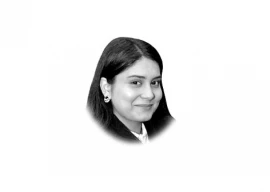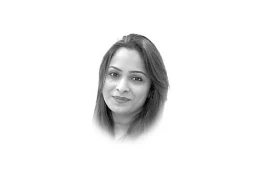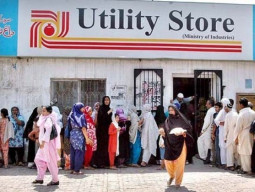
In 2010, India had 67 per cent of the 15-plus age group in school while Pakistan had 62 per cent. However, it is at the other end of the educational spectrum — what educationists call the tertiary stage — that Pakistan seems to be doing considerably better than other South Asian countries.
In 1950, for India and Pakistan, the proportion of people attending tertiary institutions was 0.6 per cent. Since this has increased to 5.8 per cent for India, a ten-fold increase, and to 5.5 per cent for Pakistan, a nine-fold growth. For Bangladesh, the increase was spectacular, a twenty-fold growth. However, it is the impressive increase for Pakistan that provides the element of surprise.
Pakistan does well in one critical area — the drop-out rate in tertiary education. Those who complete tertiary education in Pakistan account for a larger proportion of persons who enter school at this level. The proportion is much higher for girls, another surprising finding for Pakistan.
With a considerably lower drop-out rate at the tertiary level, it is not surprising that the number of years students spend in school in Pakistan (5.6 years) is higher than that in India (5.1 years) but a bit lower than that for Bangladesh ( 5.8 years). For tertiary education alone, Pakistan’s youth spend more time being educated than those in Bangladesh and India.
It is in the last two decades that the real brake occurred in Pakistan. The proportion of the 15-plus age group receiving tertiary education in Pakistan increased from only 2.4 per cent in 1990 to 5.5 per cent in 2010. The proportion of students completing tertiary education in Pakistan is 41 per cent higher than that for India. Better performance, when measured in terms of the proportion of the population receiving tertiary education, matters a great deal for the economic future. As Baro and Lee point out, the estimated rate of return is very high for tertiary education, close to 18 per cent. This is only 10 per cent for secondary education and almost zero for primary education. The state, by only concentrating on primary education, is not buying a better future for the citizenry. It must make it possible to develop tertiary education as well.
The answer to the question — why has Pakistan done so much better than other large South Asian countries? — leads us into the realm of speculation. An argument can be made that the nationalisation of privately-managed education in the 1970s and the resulting expansion in the role of public education resulted in a serious deterioration of educational standards. This troubled the well-to-do segments of the population who had the means to pay for good education if it could be provided. This brought the private sector into education and its role expanded rapidly.
The demographic changes occurring in the West and the pressure on the state to pull back from such activities as education, research and innovation means that enormous opportunities are being created for the populous countries of South Asia. In light of the little noticed progress it has made in tertiary education, Pakistan seems well positioned to take advantage of the opportunities becoming available in the new economy.
Published in The Express Tribune, August 23rd, 2011.














COMMENTS
Comments are moderated and generally will be posted if they are on-topic and not abusive.
For more information, please see our Comments FAQ